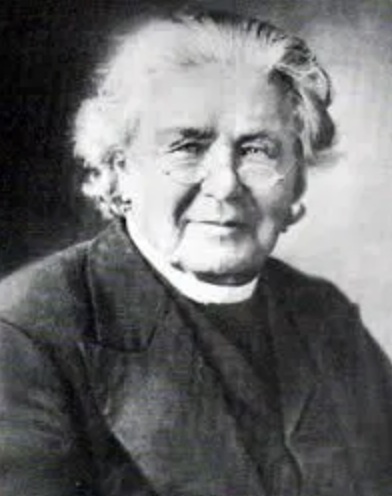Reverend Langstroth patented the beespace in America in 1851 and since then he is credited with its discovery.
This is Reverend Langstroth:

However, it was already in use in Europe by the following two gentlemen – Johann Dzierzon and August von Berlepsch:

But what is the beespace I hear you ask. Well unless you are a Developer you will have heard of Building Regulations and be familiar with the concept of Standard Sizes – for example the standard size for a doorway in a house is 775-800mm wide by 2100mm tall. This allows us humans to move about the place without ducking or turning sideways.
What Langstroth, Dzierzon and von Berlepsch all discovered was that bees too have Building Regs and Standard Sizes which allow them to move around and function effectively as a colony. In addition the beespace must also allow efficient thermoregulation in the broodnest but also prevent draughts. Because activities vary in different regions of the colony so too does the effective beespace.
<4mm When worker bees find a space so small they are unable to pass through it they will conclude that it is not a thoroughfare and therefore plug it up with propolis.
6mm is considered the standard beespace. This is the distance generally found between combs at the edges of the brood nest where the stores tend to bulge out. Bees can move freely to and fro but it is also narrow enough to defend or to prevent draughts.
9mm is the beespace to be found inside the brood nest itself. It allows two bees to pass each other without too much jostling and to work back-to-back.
>9mm When confronted with a gap of more than 9mm the bees will consider this to be way outside the standard size in terms of both intruders and cold and will fill it with brace comb.
When constructing brace comb, the bees really do allow their imaginations to run wild and build flying buttresses and crenelated wings, ornate colonnades with foliate capitals and winding dimpled galleries. It is a terrible thing to drive your hive tool through such artistry and toss the crumpled mess into your wax bucket.
Knowledge of the beespace is so very handy for the beekeeper because it allows us to build beehives with frames that can be freely removed and inspected without encumbrance and destruction. This is especially important in these troubled times when diseases and bee problems are rife and we need to watch over our bees.
There is another beespace which is of vital assistance to the beekeeper:
4.3mm will exclude queens and drones and is used in queen excluders.
Copyright © Beespoke.info, 2014. All Rights Reserved.